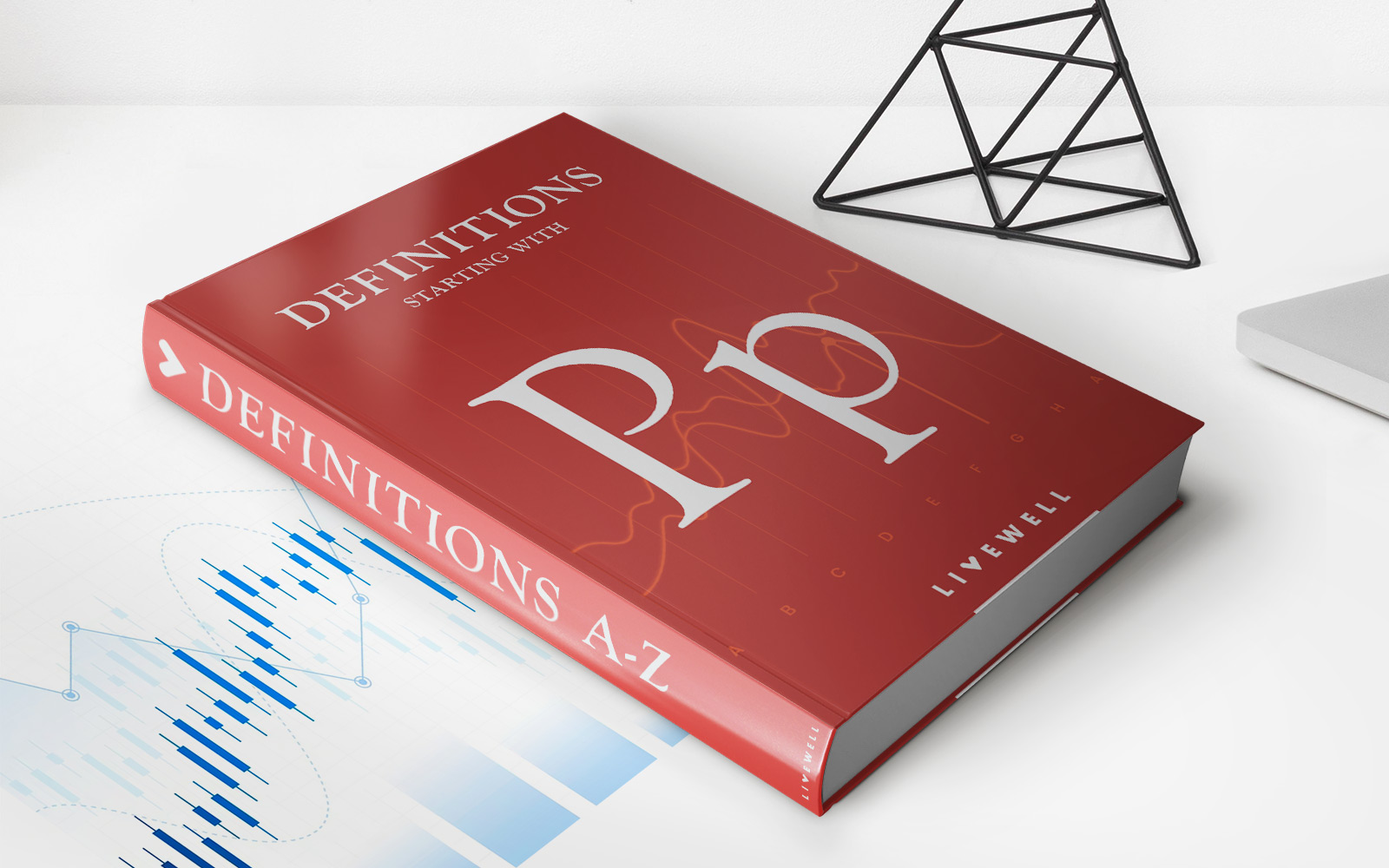Home>Finance>What Is The Term For The Person Who Receives Financial Protection From A Life Insurance Plan?


Finance
What Is The Term For The Person Who Receives Financial Protection From A Life Insurance Plan?
Modified: December 30, 2023
Learn about the financial protection offered by life insurance plans and discover the term used for the person who receives this coverage.
(Many of the links in this article redirect to a specific reviewed product. Your purchase of these products through affiliate links helps to generate commission for LiveWell, at no extra cost. Learn more)
Table of Contents
Introduction
Life insurance is an essential financial tool that provides individuals with peace of mind and financial protection for their loved ones in the event of their death. It serves as a safety net, ensuring that families and beneficiaries are financially secure even in the face of unexpected circumstances. However, in order for the benefits of a life insurance plan to be realized, it is crucial to understand the concept of a beneficiary – the person who receives the financial protection provided by the life insurance plan.
In this article, we will explore the role of the beneficiary in a life insurance plan, the process of determining the recipient of financial protection, and the importance of naming a beneficiary. Additionally, we will debunk common misconceptions surrounding beneficiaries to provide a comprehensive understanding of this vital aspect of life insurance.
By delving into the intricacies of the beneficiary designation, we hope to shed light on the significance of this decision and empower individuals to make informed choices when it comes to their life insurance plans. Let’s dive in and explore the term for the person who receives financial protection from a life insurance plan – the beneficiary.
Definition of Life Insurance
Before we delve into the concept of a beneficiary, let’s first establish a clear understanding of what life insurance entails. Life insurance is a contract between an individual (the insured) and an insurance company. In exchange for regular premium payments, the insurance company provides a payout, known as a death benefit, to the designated beneficiary upon the insured’s death.
The purpose of life insurance is to provide financial protection to the insured’s loved ones or dependents, helping them maintain their standard of living and meet their financial obligations in the event of the insured’s passing. This can include covering mortgage payments, educational expenses, daily living expenses, or even providing long-term financial stability for the recipients.
Life insurance policies can vary in terms of coverage, premium amounts, and payout options, allowing individuals to choose the plan that best fits their needs and circumstances. Common types of life insurance include term life insurance, whole life insurance, and universal life insurance, each offering distinct benefits and features.
It is important to note that life insurance is not an investment or savings vehicle, but rather a risk management tool. Its primary focus is to provide financial protection to the insured’s loved ones should the unthinkable happen.
Now that we’ve established what life insurance is, let’s move on to understanding the crucial role of the beneficiary in this financial protection process.
Overview of Financial Protection
Financial protection is an essential aspect of life insurance, and it revolves around ensuring that your loved ones are financially secure in the event of your death. When you purchase a life insurance policy, you are essentially creating a safety net that provides a lump-sum payment, known as the death benefit, to your designated beneficiary.
The death benefit is the financial protection that your loved ones will receive upon your passing. It can be used to cover various expenses and financial obligations, such as paying off debts, covering funeral expenses, maintaining the mortgage or rent payments, replacing lost income, or even funding your children’s education.
The amount of financial protection offered by a life insurance policy depends on several factors, including the policy’s coverage amount and type, the insured individual’s age, health, and lifestyle, and the premium payments made over time. It is crucial to assess your financial needs and the needs of your loved ones when determining the appropriate level of financial protection to include in your life insurance policy.
Financial protection is not solely limited to the death benefit provided by life insurance. Some life insurance policies also offer additional benefits, such as accelerated death benefits or living benefits, which allow the insured to access a portion of the death benefit while still alive if diagnosed with a chronic, critical, or terminal illness.
Furthermore, life insurance policies can also provide benefits such as cash value accumulation in permanent life insurance policies, which can be utilized as a source of emergency funds or a future savings component. These added benefits further contribute to the overall financial protection and security provided by a life insurance plan.
By understanding the concept of financial protection and the role it plays in life insurance, you can make informed decisions regarding the coverage amount and type of policy that best aligns with your specific needs and goals.
Understanding the Beneficiary
The beneficiary is a key figure in the world of life insurance. They are the person or entity designated by the policyholder to receive the death benefit in the event of the insured’s passing. The beneficiary can be a spouse, child, family member, friend, or even a charitable organization.
It is important to carefully consider and select a beneficiary when purchasing a life insurance policy. The chosen beneficiary should be someone who would be most impacted financially by the insured’s death and whom the insured wishes to provide for in their absence.
Typically, individuals choose their spouse or children as primary beneficiaries. However, it is also common to name contingent or secondary beneficiaries in the policy. These are individuals or entities who would receive the death benefit in the event that the primary beneficiary predeceases the insured or is unable to claim the benefit for any reason.
In some cases, the insured may choose to name a trust as the beneficiary. This can be beneficial for those who have complex estate planning needs or wish to specify how the death benefit should be managed or distributed among multiple beneficiaries.
It’s important to note that the beneficiary designation can be changed at any time during the insured’s lifetime, provided they are mentally competent. This allows for flexibility in adjusting the beneficiary based on personal circumstances, changes in relationships, or other financial considerations.
Furthermore, it’s crucial to keep the beneficiary designation up to date. Life events such as marriages, divorces, births, or deaths within the family may warrant a review and revision of the beneficiary designation to ensure that the intended recipients receive the financial protection.
By understanding the role and significance of the beneficiary in a life insurance policy, individuals can make informed decisions when selecting the appropriate person or entity to receive the death benefit. It’s a crucial component of ensuring that the financial protection provided by the policy is directed to the intended recipients upon the insured’s passing.
Role of the Beneficiary in a Life Insurance Plan
The beneficiary plays a crucial role in a life insurance plan. They are the individual or entity who will receive the death benefit provided by the policy upon the insured’s passing. The role of the beneficiary extends beyond simply receiving the financial protection; they are responsible for claiming the death benefit and ensuring that it is utilized as intended.
Once the insured individual passes away, it is the responsibility of the beneficiary to notify the insurance company of the death and initiate the claims process. This involves submitting the necessary documentation, such as proof of death and identification, to validate the claim. The insurance company will then process the claim and distribute the death benefit to the designated beneficiary.
Once the beneficiary receives the death benefit, they have the freedom to determine how to utilize the funds. It is important to note that the death benefit is usually tax-free, providing a significant advantage in terms of the financial impact on the recipient. The beneficiary may choose to use the funds to cover immediate expenses, pay off debts, invest for the future, or fulfill any other financial obligations or desires.
In cases where the insured has named multiple beneficiaries or designated a trust, the role of the beneficiary becomes even more important. It is their responsibility to manage and distribute the death benefit according to the wishes and instructions outlined in the policy or trust documentation.
Additionally, the beneficiary may be required to make decisions regarding the payout option for the death benefit. Most life insurance policies offer various options, such as receiving the benefit as a lump sum, receiving periodic payments, or setting up an annuity. The chosen payout option can have significant implications for the beneficiary’s financial situation, so careful consideration is necessary.
The role of the beneficiary in a life insurance plan is not limited to financial aspects alone. They also carry the emotional weight of managing the resources left behind by the insured and making decisions that align with the insured’s intentions and best interests.
It is essential for both policyholders and beneficiaries to have open and honest communication regarding the policy terms, the beneficiary’s responsibilities, and the intended use of the death benefit. This ensures that all parties involved have a clear understanding of their roles and can work towards fulfilling the purpose of the life insurance plan.
Determining the Recipient of Financial Protection
When purchasing a life insurance policy, one of the most crucial decisions is determining who will be the recipient of the financial protection provided by the policy. This decision is critical because the chosen beneficiary will be the one who receives the death benefit upon the insured’s passing.
There are several factors to consider when determining the recipient of the financial protection. The first is identifying the individuals who would be most affected financially by the insured’s death. This often includes immediate family members, such as a spouse or children, who rely on the insured for financial support.
Another factor to consider is the insured’s financial obligations and long-term goals. It’s important to assess any outstanding debts, such as mortgages, loans, or credit card balances, and to consider the financial impact of these obligations on the chosen beneficiary. Additionally, if the insured has specific goals for their death benefit, such as funding their children’s education or contributing to a charitable cause, these factors should be taken into account when determining the recipient.
Personal relationships and circumstances are also crucial in the determination process. The insured may have strong emotional ties or financial responsibilities towards certain individuals, such as a long-term partner, aging parents, or a dependent sibling. It is important to consider these relationships and their impact on the chosen beneficiary.
In some cases, the insured may opt to name multiple beneficiaries. This can be beneficial when there are multiple individuals who would be significantly impacted financially by the insured’s death or when the insured wishes to allocate the death benefit among several recipients. By naming multiple beneficiaries, the insured ensures that the financial protection is distributed according to their wishes.
Additionally, certain policies allow for contingent or secondary beneficiaries to be named. These individuals or entities would receive the death benefit if the primary beneficiary is unable to claim it or predeceases the insured. Naming contingent beneficiaries provides a backup plan and ensures that the financial protection reaches the intended recipients in any situation.
Determining the recipient of financial protection requires careful consideration of all these factors. It is essential to think about the short-term and long-term financial needs of the chosen beneficiary, as well as any specific goals or responsibilities the insured wishes to address. By making an informed decision about the beneficiary, the insured can ensure that their loved ones receive the intended financial protection and support in the event of their passing.
Importance of Naming a Beneficiary
Naming a beneficiary is a critical aspect of a life insurance plan, and it holds significant importance for both the insured and their loved ones. Here are several key reasons why naming a beneficiary is crucial:
Ensuring Financial Security: By naming a beneficiary, the insured ensures that their loved ones are financially protected in the event of their passing. The death benefit provided by the life insurance policy can help cover immediate expenses, pay off debts, and provide long-term financial stability for the recipient.
Directing the Distribution of Assets: Naming a beneficiary allows the insured to direct the distribution of their assets according to their wishes. Without a designated beneficiary, the distribution of the death benefit may be subject to legal processes or the default laws of the insurance company or state, potentially causing delays and complications for the intended recipients.
Avoiding Probate: One of the significant advantages of life insurance is that the death benefit is typically exempt from probate. This means that the funds can be distributed directly to the named beneficiary without going through the sometimes lengthy and expensive probate process. Naming a beneficiary allows for a seamless transfer of the financial protection to the intended recipient.
Flexibility and Control: By naming a beneficiary, the insured retains flexibility and control over who will receive the financial protection. The beneficiary designation can be changed at any time during the insured’s lifetime, allowing for adjustments based on changing circumstances, relationships, or financial needs. The insured can also name contingent beneficiaries to ensure that the death benefit is directed to backup recipients if the primary beneficiary is unable to claim it.
Privacy and Confidentiality: Life insurance policies typically offer privacy and confidentiality regarding the beneficiary designation. Unlike assets that go through probate, the beneficiary designation is not a matter of public record. This allows the insured to keep their financial affairs private and protect the privacy of their loved ones.
Peace of Mind: Naming a beneficiary provides peace of mind for the insured, knowing that their loved ones will be taken care of financially in their absence. It offers reassurance that their financial responsibilities and goals will be addressed, helping to alleviate worries and concerns about the future well-being of their family and dependents.
Communication and Clarity: Designating a beneficiary encourages open and honest communication between the insured and their loved ones. Discussing the choice of beneficiary not only ensures that everyone is aware of the financial protection in place but also allows for any questions, concerns, or specific instructions to be addressed.
Given these reasons, it is clear that naming a beneficiary is of utmost importance in a life insurance plan. It provides financial security, directs the distribution of assets, avoids probate, offers flexibility and control, maintains privacy, and provides peace of mind for the insured and their loved ones. Therefore, careful consideration should be given in selecting and regularly reviewing the beneficiary designation to ensure that the financial protection aligns with the insured’s intentions and the needs of their beneficiaries.
Common Misconceptions About Beneficiaries
Despite the importance of naming a beneficiary in a life insurance plan, there are several common misconceptions that exist surrounding this aspect. It is essential to address these misconceptions to ensure individuals have a clear understanding of the role and implications of naming a beneficiary. Here are some of the most common misconceptions:
1. Beneficiaries Must Be Family Members: One common misconception is that beneficiaries must be immediate family members. In reality, beneficiaries can be anyone the insured chooses, including friends, business partners, or charitable organizations. The decision ultimately depends on the insured’s personal circumstances and financial goals.
2. Naming a Beneficiary Locks in the Choice Forever: Another misconception is that once a beneficiary is named, it cannot be changed. In actuality, beneficiaries can be updated and changed at any time during the insured’s lifetime, as long as they are mentally competent. It is important to regularly review and update the beneficiary designation to ensure it aligns with current wishes and circumstances.
3. Beneficiaries Automatically Receive the Payout: It is sometimes assumed that the beneficiary automatically receives the death benefit. However, the beneficiary must initiate the claims process with the insurance company upon the insured’s death. They need to submit the necessary documentation and follow the required procedures to receive the financial protection provided by the life insurance plan.
4. Beneficiaries Must Be Notified of Their Designation: Some individuals believe that they must inform their beneficiaries that they have been named as such. While it is generally a good practice to inform beneficiaries about their designation, it is not a legal requirement. The responsibility lies with the insured to ensure that the beneficiary designation is up to date and accurately reflects their wishes.
5. All Beneficiaries Share the Death Benefit Equally: It is often assumed that if multiple beneficiaries are named, the death benefit will be divided equally among them. However, it is up to the insured to specify how the death benefit should be distributed among multiple beneficiaries. They can allocate percentages or amounts to each beneficiary, ensuring that the financial protection is distributed according to their intended wishes.
6. Beneficiaries Are Only for Traditional Life Insurance Policies: Beneficiaries are commonly associated with traditional life insurance policies. However, they can also be named in other types of policies, such as group life insurance, employer-sponsored plans, and retirement accounts. It is important to understand the requirements and options specific to each policy type when designating beneficiaries.
7. Estate Planning Ensures the Right Distribution: Some individuals believe that estate planning, such as creating a will or establishing a trust, overrides the beneficiary designation in a life insurance policy. However, the beneficiary designation takes precedence over any other estate planning documents. It is crucial to ensure that the beneficiary designation is in line with the intentions outlined in other estate planning documents to avoid conflicts or unintended distributions.
By addressing these common misconceptions, individuals can make more informed decisions when it comes to naming a beneficiary in their life insurance plans. It is important to seek guidance from professionals and carefully review policy terms to fully understand the implications and options regarding beneficiaries.
Conclusion
Naming a beneficiary is a crucial aspect of a life insurance plan, ensuring that the financial protection provided by the policy reaches the intended recipients upon the insured’s passing. By understanding the role of the beneficiary and the importance of their designation, individuals can make informed decisions when selecting and updating their beneficiaries.
Life insurance serves as a safety net, offering financial security and peace of mind to individuals and their loved ones. The death benefit provided by a life insurance policy can help cover immediate expenses, pay off debts, and provide long-term financial stability. The beneficiary plays a vital role in claiming and utilizing the death benefit, making it essential to carefully consider and select the right person or entity.
It is important to debunk misconceptions surrounding beneficiaries, such as the assumption that they must be family members or that the designation is permanent. Beneficiaries can be anyone the insured chooses, and the designation can be updated throughout the insured’s lifetime to reflect changing circumstances and wishes.
By naming a beneficiary, individuals can ensure the direct distribution of their assets, avoid probate, maintain privacy, and retain control over their financial affairs. Additionally, clear communication regarding the selection of a beneficiary fosters open dialogue and ensures that the financial protection aligns with the insured’s intentions.
In conclusion, naming a beneficiary is a critical step in maximizing the benefits of a life insurance policy. It provides peace of mind, directs the flow of financial protection, and ensures that loved ones are taken care of during challenging times. By understanding the significance of the beneficiary designation and addressing any misconceptions, individuals can make informed decisions that align with their financial goals and the needs of their beneficiaries.














